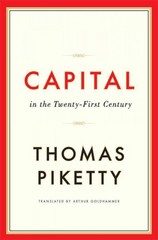Question
Consider two firms producing detergent, a green firm and a brown firm. They are located on Main Street, which is one mile long. The green
Consider two firms producing detergent, a green firm and a brown firm. They are located on Main Street, which is one mile long. The green firm is at the left end of Main Street. It uses an environmentally friendly production technology and has a constant unit cost of 7 per bottle of detergent. The brown firm is at the right end of Main Street and has a constant unit cost of 1 per bottle of detergent. Green and brown detergents are similar except for their environmental impact. There are 1,000 potential customers. They derive the same utility from consuming the brown or green detergent and are uniformly spread up and down Main Street. Every week they each buy one bottle of detergent from one of the two stores. When a consumer has to travel to the store then a travel cost of t per mile is incurred. Note that if a customer travels x miles, then she will also need to travel home. So, the total travel distance is 2x, and the total travel cost is 2tx. If the price of the detergent is p, then the total price paid by the customer is p + 2tx. Suppose that t = 1. Each firm wants to set a price for detergent that maximises the firm's profits.
(a) What are the demand functions for the green firm and the brown firm?
(b) Suppose the two firms set their prices simultaneously. What are the equilibrium prices set by the two firms? What are their market shares at these prices?
(c) Now, assume that the brown firm sets its price first and then the green firm sets its own price. After the prices are posted consumers buy from the firm with the lowest price including travel expenses. What are the equilibrium prices set by the two firms? What are their market shares at these prices?
(d) Show that the green firm has a second-mover advantage. What features of the model explain this result?
(e) Would it be the case if the travel costs per mile were t = 0? Justify your answer.
Step by Step Solution
There are 3 Steps involved in it
Step: 1

Get Instant Access to Expert-Tailored Solutions
See step-by-step solutions with expert insights and AI powered tools for academic success
Step: 2

Step: 3

Ace Your Homework with AI
Get the answers you need in no time with our AI-driven, step-by-step assistance
Get Started


